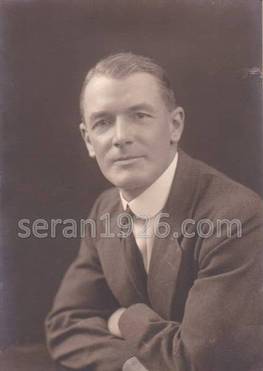Higley Halliday M.I.N.A.
M.I.A.E., M.I.Mech.E., F.R.G.S.
“There must be few people who are better known in yachting circles than Higley Halliday”
The Motor Boat, 1935
Today, Higley Halliday is a largely forgotten character
(Classic Boat magazine recently posed the question, “never heard of Higley
Halliday?”), all the more surprising given the reputation he built in the first
half of the twentieth century as a naval architect, marine engineer, consultant
and seamanship instructor over a career spanning more than five decades.
A pioneer of motor boat development in the early 1900’s,
Halliday designed a number of Thornycroft's entrants in the first Harmsworth
Trophy races and Reliability Trials of 1903 and 1904, working closely with Tom
Thornycroft. He found widespread recognition in October 1905 accepting a wager
to attempt a record breaking single-handed, non-stop run from Southampton to
London in the ‘Iris’, an open 30 ft. launch which he had designed and built. He
completed the run in 27 ½ hours, and his success was widely reported in the
press at the time.
In 1907 Halliday moved to Merseyside to start a two year
project developing one of the earliest hydroplanes, after which he returned to
London. Shortly afterwards he entered into partnership with Frank Maynard,
the well known Chiswick boat builder, which was to last until 1926. Following
the outbreak of the War, Halliday produced designs for the War Office and, in
1915 was working closely with T. O. M. Sopwith and other leading marine
engineers on what’s thought to have been a prototype of the Coastal Motor Boat.
Halliday was at the peak of his career in the 1920's and
many of his motor yacht designs were reproduced in the yachting press of the
day. He was as comfortable designing yachts and racing launches as
commercial craft - either unpowered, or fitted with electric, steam or internal
combustion engine – demonstrating, for one man, a remarkable breadth of
experience and competence. On occasion his designs called for less
conventional solutions including air propelled and hydraulic launches, and
bespoke shallow draught vessels. His reputation attracted an enviable client
base of industrialists, sportsmen, nobility and foreign dignitaries. From the
late 1920's Halliday increasingly focused on consultancy work which he
continued into the early 1950's.
Having joined the newly established Little Ship Club in
early 1927, Halliday was to become one of the club's most committed members. He
was elected Honorary Seamanship Instructor in 1928, a position he held for
twenty-two years. During the Second World War, Halliday served as a Lieutenant
and “Four Striper” in the R.N.V.R. providing shore based training to members. In recognition of this service, the Club was given the Warrant to wear the Blue
Defaced Ensign. On his retirement in 1950, Halliday was made Honorary Life
Vice-President, a position created especially for him.
